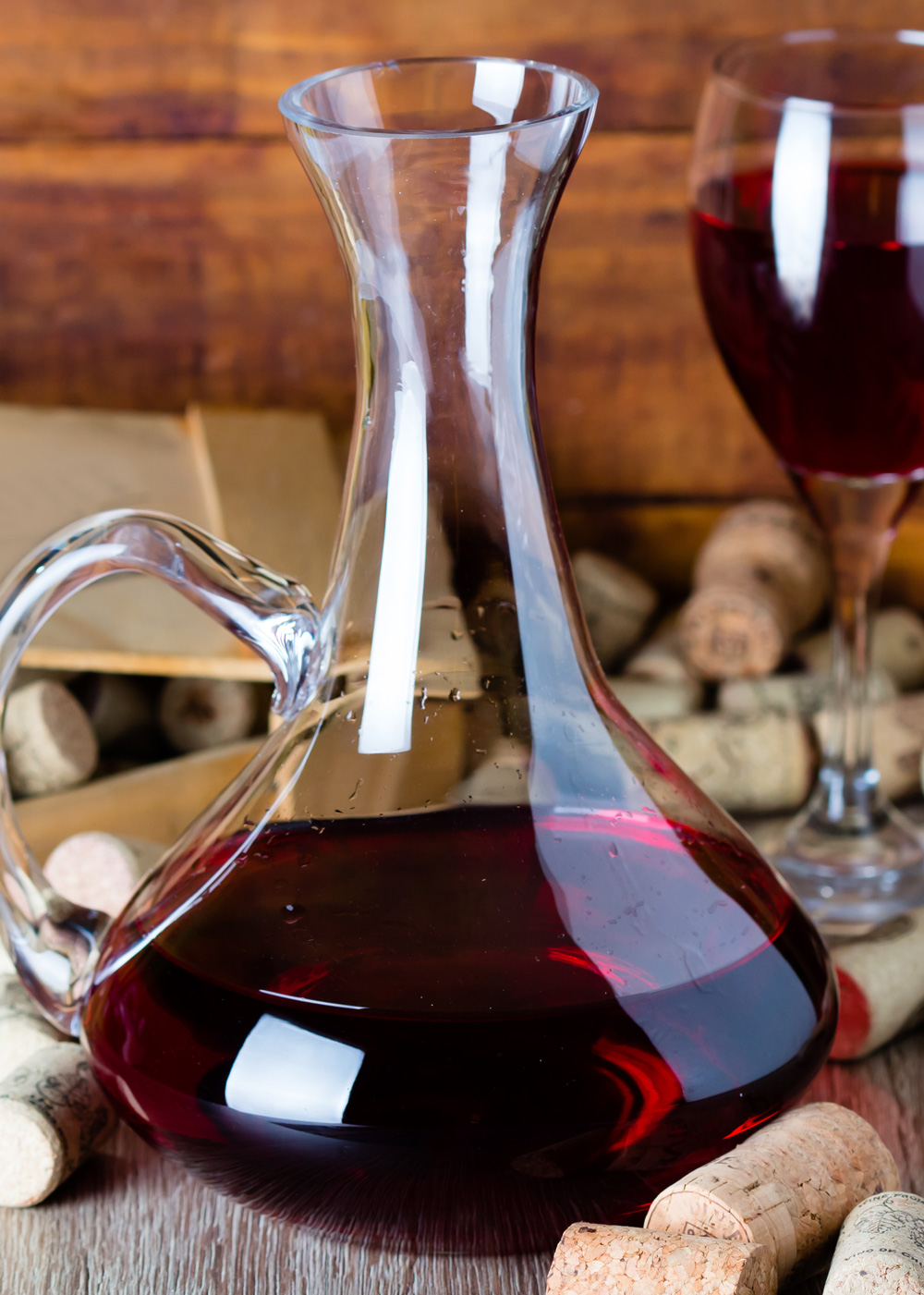Which wines should be decanted? When and how? Do you need a special decanter with a particular shape? These questions can be difficult and controversial. In this article, we’ll try to present some information that will help you decide the answers for yourself.
Removing Sediment
The word “decant” means “to pour a liquid from one vessel into another.” Before the advent of modern winemaking techniques, almost all bottles had large amounts of sediment. Pouring the wine into a separate container removed most of the solids, so the wine could be served without grit in the drinking glasses. The removal of sediment remains the most obvious reason for decanting, although most wines are currently filtered before bottling, thereby making them free of sediment. Some wines, however, still contain sediment. Not all wines are filtered, and some of the chemical components in wine solidify during the process of aging. If you have reason to think a bottle will have sediment, you should decant.

Simply pour the wine, slowly, from the bottle into another vessel – in this case, the shape doesn’t matter. The sediment will collect in the “shoulder” of the bottle, where the neck narrows. When you think that the sediment will begin to flow out of the neck, stop. Sometimes, there is a noticeable amount of liquid left in the bottle after decanting; don’t worry about that. You can filter it with a strainer, or simply discard it. Many professionals will hold the bottle over a light source such as a candle during this decanting process, to make it easier to see the sediments through the glass. Fancy glass decanters and candles are as much about showy display as they are about practicality. You can simply use a light bulb and water pitcher if you want.
Aeration
The second traditional reason to decant a wine is to expose the liquid to oxygen – a process called “aeration” – to make the wine taste more fruity, softer, and less tannic. Red wines, in particular, can be somewhat “tight” or muted in flavor when they are first opened, and exposure to oxygen will help them to “open,” or become more aromatic. There is limited scientific research into the aeration of wine, and there is some debate as to its effectiveness. It seems that certain aromatic components in the wine, called “thiols,” can become concentrated during prolonged aging in the oxygen-free environment inside the bottle. When exposed to air, these “thiols” form compounds, known as “disulfides,” which are much less aromatic.

In other words, aeration seems to be minimizing flavors and aromas that might throw off the balance of the wine. Some scientists, notably the late professor Émile Peynaud of the University of Bordeaux, have argued that aeration only diminishes the intensity and flavor of wine and should be used sparingly. Ultimately, these are matters you should explore for yourself. Try aerating a wine and see whether you notice a difference. If so, you can consider more decanting in the future. There are some die-hard enthusiasts who decant all their wines – including whites.
How to Decant
A traditional glass decanter can be a lovely display item in your home and add an element of excitement and ritual to your dinner table. If your primary goal is sediment removal, a taller, thinner decanter is a good idea, as it will be more likely to catch particles that might have made it past your initial filtering process. If you are interested in aeration, try a short, wide decanter that will maximize the air contact with the surface area of your wine.
If you don’t have a traditional decanter or don’t want to buy one, never fear. You can use common kitchen items instead. A pitcher used for water or lemonade works just as well as a traditional decanter. You can also use a practice sometimes known as “Bordeaux decanting,” where you pour the wine out of the bottle into anything you want, rinse the wine bottle out if it contains leftover sediment, and return the wine to the bottle using a standard kitchen funnel. This serves the dual purpose of removing sediment and aerating the wine. If needed, you could add the optional step of running the wine through a strainer to remove particles or broken cork pieces – not all corks come out as cleanly as we might wish.
There are two other techniques to consider that are both extremely controversial. The first is advocated by the Mollydooker Winery in Australia. Pour a glass from a freshly opened bottle, reseal with the screwcap or cork, and shake the bottle vigorously. Mollydooker claims that this will aerate the wine quickly. Another idea comes from Nathan Myhrvold, author of Modernist Cuisine. He advocates pouring a bottle in a blender and running it on high for 60 seconds. Many experts worry that this might damage the flavor of the wine, but perhaps you can try it and see for yourself.
Hopefully, you are now better informed about the question of decanting and can see that it is more an art than a science.



